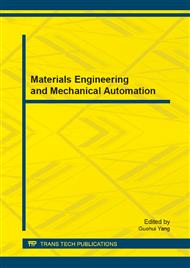p.104
p.110
p.116
p.120
p.125
p.129
p.134
p.138
p.142
Compression Tests of Polycarbonate under Quasi-Static and Dynamic Loading
Abstract:
Strain rate response of polycarbonate was investigated under uniaxial compression at different rates of strain ranging from 0.0001/sec to about 8200/sec and different temperature ranging from 145k to about 423k. A split Hopkinson pressure bar was used to determine the dynamic compressive responses. A pulse-shaping technique was employed in dynamic compression experiment to ensure that valid experimental conditions were satisfied. Results show that, compared with quasi-static behavior, dynamic compression results in significantly higher compressive strengths for polycarbonate materials.
Info:
Periodical:
Pages:
125-128
Citation:
Online since:
October 2013
Authors:
Price:
Сopyright:
© 2014 Trans Tech Publications Ltd. All Rights Reserved
Share:
Citation:


